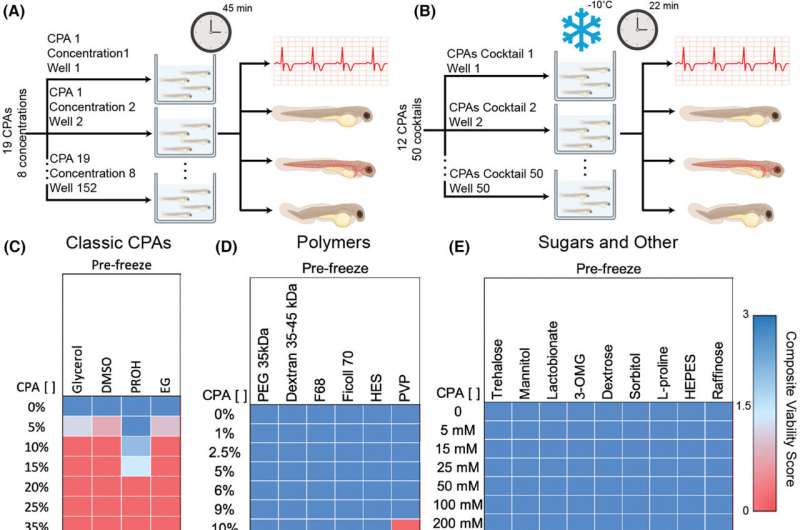This article has been reviewed according to Science X's editorial process and policies. Editors have highlighted the following attributes while ensuring the content's credibility:
fact-checked
peer-reviewed publication
trusted source
proofread
Researchers develop mixture of compounds to help preserve organs before transplantation

Using zebrafish as a model, investigators have determined a suitable combination of chemical compounds in which to store hearts, and potentially other organs, when frozen for extended periods of time before transplantation.
The work, which is published in The FASEB Journal, involved a variety of methods, including assays at multiple developmental stages, techniques for loading and unloading agents, and the use of viability scores to quantify organ function.
These methods allowed scientists to perform the largest and most comprehensive screen of cryoprotectant agents to determine their toxicity and efficiency at preserving complex organ systems during storage at -10°C. As a result, adult zebrafish hearts' cardiac function was successfully preserved after 5 days of storage.
"Zebrafish are a powerful model system that have never been used in the context of solid organ preservation for transplantation, despite several advantages," said corresponding author Shannon N. Tessier, Ph.D., of the Center for Engineering in Medicine and Surgery, Harvard Medical School. "We hope this research will encourage other in transplantation sciences to leverage this important model organism."
More information: Luciana Da Silveira Cavalcante et al, Zebrafish as a high throughput model for organ preservation and transplantation research, The FASEB Journal (2023). DOI: 10.1096/fj.202300076R



















